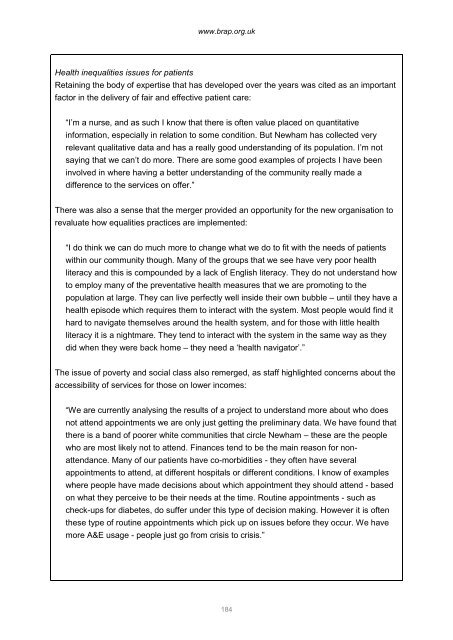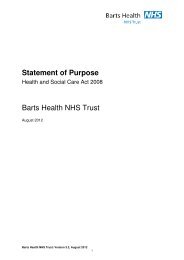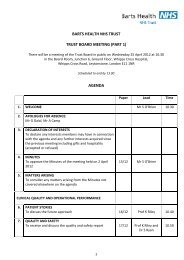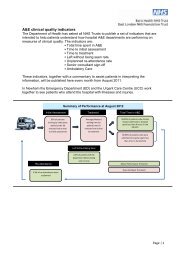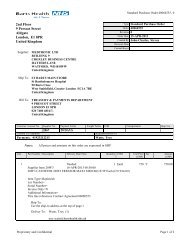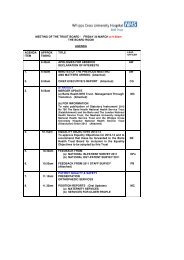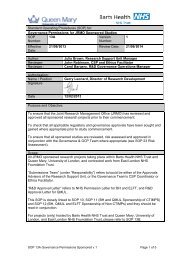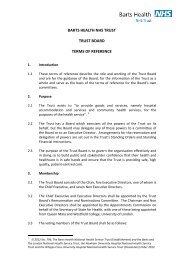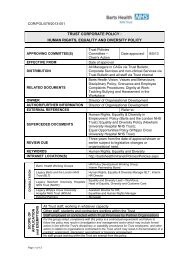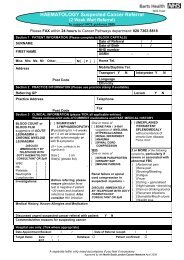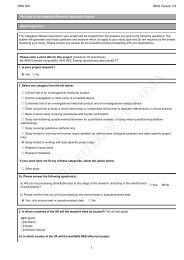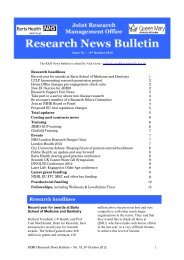Barts Health Equality and Human Rights Impact Assessment Report
Barts Health Equality and Human Rights Impact Assessment Report
Barts Health Equality and Human Rights Impact Assessment Report
- No tags were found...
You also want an ePaper? Increase the reach of your titles
YUMPU automatically turns print PDFs into web optimized ePapers that Google loves.
www.brap.org.uk<strong>Health</strong> inequalities issues for patientsRetaining the body of expertise that has developed over the years was cited as an importantfactor in the delivery of fair <strong>and</strong> effective patient care:“I’m a nurse, <strong>and</strong> as such I know that there is often value placed on quantitativeinformation, especially in relation to some condition. But Newham has collected veryrelevant qualitative data <strong>and</strong> has a really good underst<strong>and</strong>ing of its population. I’m notsaying that we can’t do more. There are some good examples of projects I have beeninvolved in where having a better underst<strong>and</strong>ing of the community really made adifference to the services on offer.”There was also a sense that the merger provided an opportunity for the new organisation torevaluate how equalities practices are implemented:“I do think we can do much more to change what we do to fit with the needs of patientswithin our community though. Many of the groups that we see have very poor healthliteracy <strong>and</strong> this is compounded by a lack of English literacy. They do not underst<strong>and</strong> howto employ many of the preventative health measures that we are promoting to thepopulation at large. They can live perfectly well inside their own bubble – until they have ahealth episode which requires them to interact with the system. Most people would find ithard to navigate themselves around the health system, <strong>and</strong> for those with little healthliteracy it is a nightmare. They tend to interact with the system in the same way as theydid when they were back home – they need a ‘health navigator’.”The issue of poverty <strong>and</strong> social class also remerged, as staff highlighted concerns about theaccessibility of services for those on lower incomes:“We are currently analysing the results of a project to underst<strong>and</strong> more about who doesnot attend appointments we are only just getting the preliminary data. We have found thatthere is a b<strong>and</strong> of poorer white communities that circle Newham – these are the peoplewho are most likely not to attend. Finances tend to be the main reason for nonattendance.Many of our patients have co-morbidities - they often have severalappointments to attend, at different hospitals or different conditions. I know of exampleswhere people have made decisions about which appointment they should attend - basedon what they perceive to be their needs at the time. Routine appointments - such ascheck-ups for diabetes, do suffer under this type of decision making. However it is oftenthese type of routine appointments which pick up on issues before they occur. We havemore A&E usage - people just go from crisis to crisis.”184


